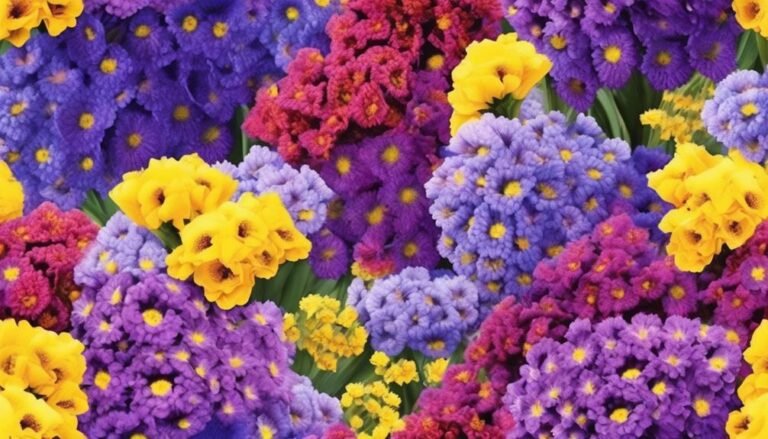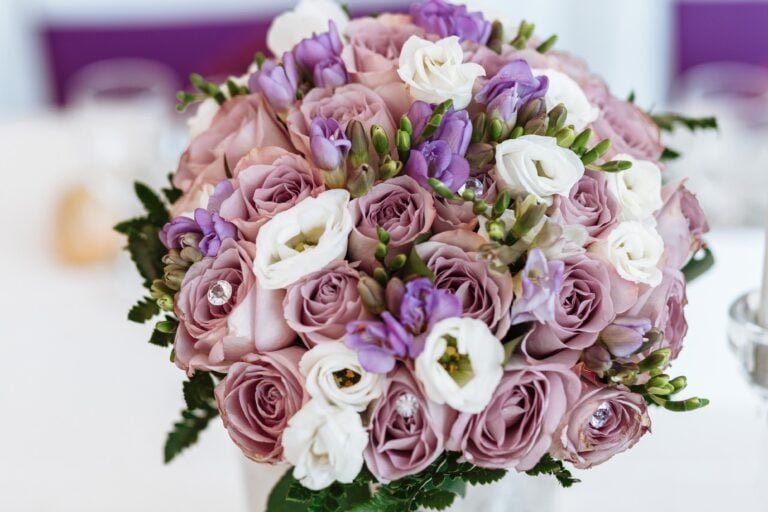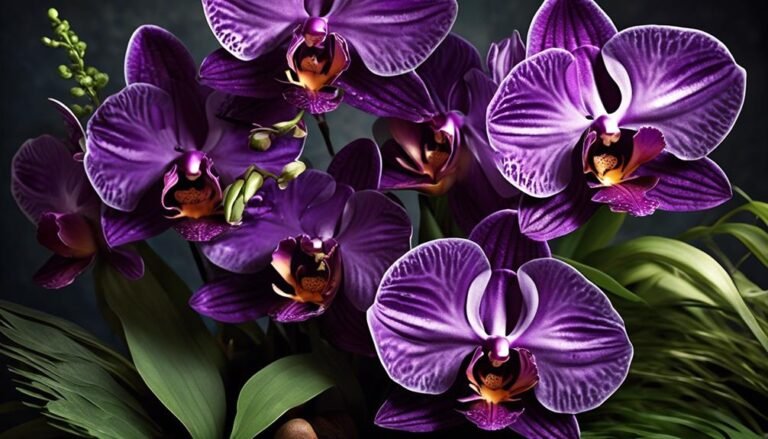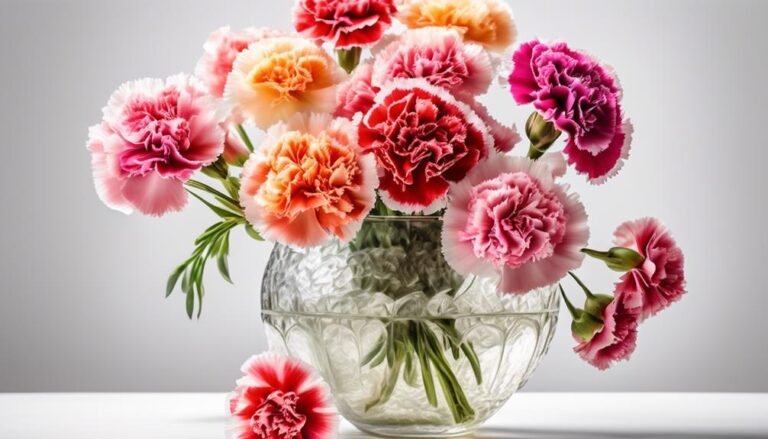Popular Types of Florist Flowers – Gardenia
Gardenias are a beloved choice among florists, known for their elegance and captivating fragrance. These blooms are often associated with purity and sweetness, making them a popular choice for special occasions and gifts. Let's explore the fascinating world of gardenias, from their scientific name to their seasonal availability and care tips.
Scientific Name and Background History
The scientific name of the gardenia is Gardenia jasminoides, and it belongs to the family Rubiaceae. Originating from China, Japan, and Taiwan, gardenias have a rich history dating back to the 18th century when they were introduced to the Western world. These blooms have since become a symbol of refinement and grace in the world of floristry.
Seasonal Availability
Gardenias are typically available from late spring to early summer, although they can be found year-round in some regions. As a seasonal flower, they are often used in weddings and other special events during their peak availability. Their lush, creamy white petals make them a stunning addition to any floral arrangement.
Care Tips
Caring for gardenias requires attention to detail. They thrive in well-drained, acidic soil and prefer partial shade. Regular watering and fertilization are essential to keep the plants healthy and promote abundant blooms. Additionally, maintaining high humidity levels is crucial for the optimal growth of gardenias.
In conclusion, gardenias are a timeless and cherished choice for florists and flower enthusiasts alike. Their scientific name, seasonal availability, and care tips provide valuable insights into the world of these exquisite blooms. Whether adorning a bouquet or a garden, gardenias never fail to captivate with their beauty and fragrance.
Scientific Name
Gardenia, scientifically known as Gardenia jasminoides, is a member of the coffee family, Rubiaceae, and is named after the 18th-century Scottish-American naturalist, Alexander Garden. This beautiful flower is highly valued for its uses in perfumery and holds significant symbolism and cultural importance.
In perfumery, gardenia is prized for its intoxicating fragrance. The essential oil extracted from its petals is a sought-after ingredient in high-end perfumes, renowned for its rich, floral scent with hints of jasmine. The flower's aroma is often described as sultry, sweet, and romantic, making it a popular choice for adding depth and allure to fragrances.
Symbolically, gardenia is associated with love, purity, and refinement. It's often used to express heartfelt emotions, particularly love and admiration. In some traditions, gardenias are used in wedding ceremonies to symbolize the purity and clarity of the union. In certain Asian cultures, gardenias convey the importance of peace, harmony, and balance.
Gardenias have also held significance in various art forms, literature, and fashion, where they symbolize beauty, grace, and femininity. Their representation in these diverse spheres underscores the cultural impact and symbolism of this botanical marvel.
Background History
Gardenias have a rich history that dates back to their discovery in tropical and subtropical regions of Africa, southern Asia, Australasia, and Oceania. These beautiful flowers aren't only admired for their striking appearance and captivating fragrance but also for their traditional medicinal uses.
In traditional Chinese medicine, gardenia fruits have been used to address issues like irritability, anxiety, and insomnia due to their calming properties. The flowers are also known for their anti-inflammatory properties and have been used to treat various inflammatory conditions.
Culturally, gardenias hold significant symbolism. They're often associated with purity, love, and refinement, making them popular choices for wedding bouquets and decorations. In some cultures, gardenias symbolize clarity and self-reflection, and are used in spiritual practices and rituals.
Physical Description
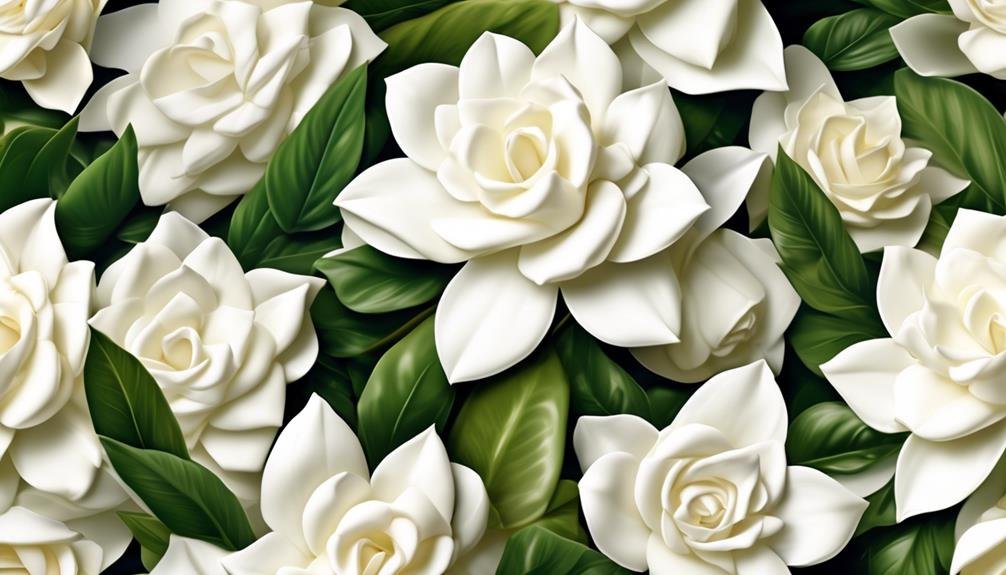
Gardenias are heat-loving evergreen shrubs or trees with waxy, creamy-white flowers and shiny, leathery, dark green leaves. They can grow from 2 to 12 feet tall and wide, with solitary or clustered flowers ranging from single to double blooms. The flowers open white, maturing to soft creamy yellow and symbolize purity and sweetness, making them popular for weddings. Gardenias last 3-8 days as cut flowers and produce orange-red berries in late summer and fall. Hardy Gardenia varieties can withstand extreme cold weather, providing options for gardeners in colder climates.
In some Asian countries, gardenias represent clarity, purity, and peace. In Victorian times, they were often exchanged as a sign of secret love. They symbolize refinement and purity in the language of flowers and are commonly used in bridal bouquets. Gardenia fruits have been used in traditional Chinese medicine to treat irritability, headache, and vertigo. The cultural significance and symbolism of gardenias make them an integral part of various traditions and customs around the world.
Colours and Characteristics
Gardenias are known for their bright white petals and glossy evergreen leaves, making them a popular choice for floral arrangements. They come in various colors and shapes, offering flexibility in designs.
Here are the different varieties and growing tips for gardenias:
- Varieties:
- Gardenia jasminoides: This common variety has classic white flowers and a sweet fragrance, suitable for both indoor and outdoor settings.
- Gardenia taitensis: Also known as Tahitian gardenia, this variety has larger flowers and a strong, exotic scent.
- Gardenia augusta 'Radicans': A low-growing variety ideal for ground cover or containers, producing small, fragrant blooms.
- Gardenia thunbergia: Known for its unique pinwheel-shaped flowers, adding a distinctive touch to floral arrangements.
- Growing Tips:
- Light: Gardenias thrive in bright, indirect light, best placed near a south- or west-facing window when grown indoors.
- Soil: They prefer well-draining, acidic soil, achieved with a mix of peat moss and sand.
- Watering: Keep the soil consistently moist but not waterlogged, avoiding complete drying between waterings.
- Pruning: Regular pruning helps maintain the plant's shape and size, and encourages new growth and flower production.
Understanding the different varieties and following proper growing tips will help you enjoy the beauty and fragrance of gardenias in your floral arrangements.
Varieties Available
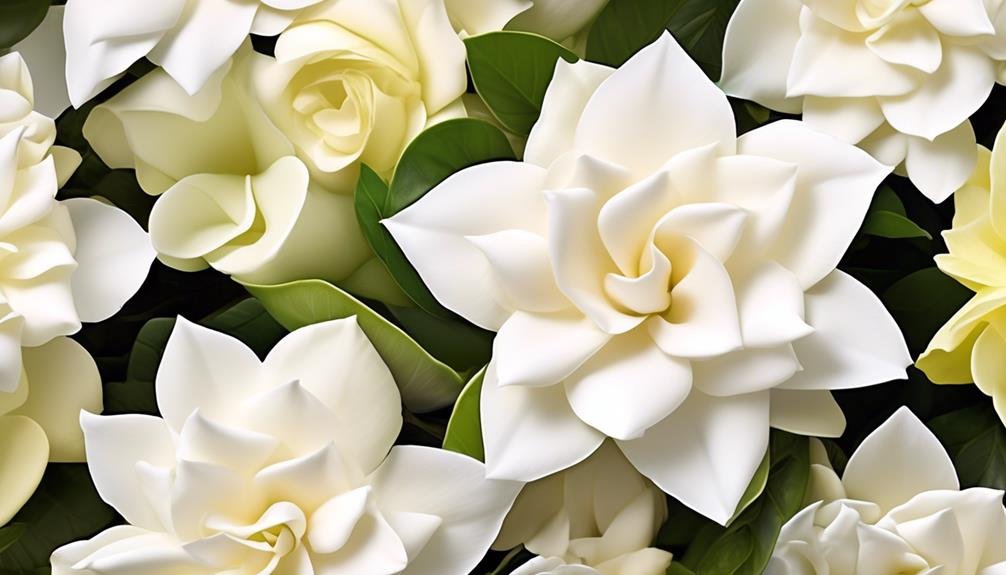
Gardenia Varieties: A Guide to Colors, Petal Formations, and Fragrances
Gardenia varieties offer a wide range of colors, petal formations, and fragrances, making them versatile for floral design and cultivation. The most popular type is the Cape jasmine (Gardenia jasminoides), which includes single, semi-double, and double varieties. The single variety has five to nine petals, while the semi-double and double types have a fuller appearance with an increasing number of petals. These flowers come in classic white and cream shades, and some varieties produce orange-red berries in late summer and fall, adding ornamental value to the plant.
Symbolic Significance and Uses
Gardenias are highly sought after for their aesthetic and symbolic significance. Their pure white or cream-colored blossoms symbolize purity and sweetness, making them popular for wedding bouquets and flower arrangements. The sweet fragrance of gardenias enhances their appeal, adding a delightful sensory experience to any floral composition. They're also used in corsages, as potted plants, and as decorative elements in indoor spaces.
Seasonal Availability
Gardenias are typically available from mid-spring to late summer, with some varieties blooming into fall, depending on the specific climate and growing conditions. These fragrant blooms are a popular choice for weddings, symbolizing purity and sweetness. If you're planning a wedding during gardenia's peak season, you can take advantage of their availability to create stunning and meaningful floral arrangements.
To keep gardenia flowers fresh, there are several steps you can take. First, place the stems in lukewarm water immediately after cutting. This will help the flowers absorb water and stay hydrated. Remember to change the water every 1-2 days to prevent bacterial growth and keep the water clean.
In addition to water, it's important to provide a cool environment for gardenias. Keep them away from direct sunlight and drafts, as these can cause the flowers to wilt or dry out quickly. Ideal temperatures for gardenias range from 60-70 degrees Fahrenheit.
To increase humidity around the flowers, mist them with water regularly. This will help prevent the petals from drying out and keep the blooms looking fresh and vibrant. You can also place a humidifier nearby or use a tray filled with water and pebbles to create a humid microclimate.
Care Tips
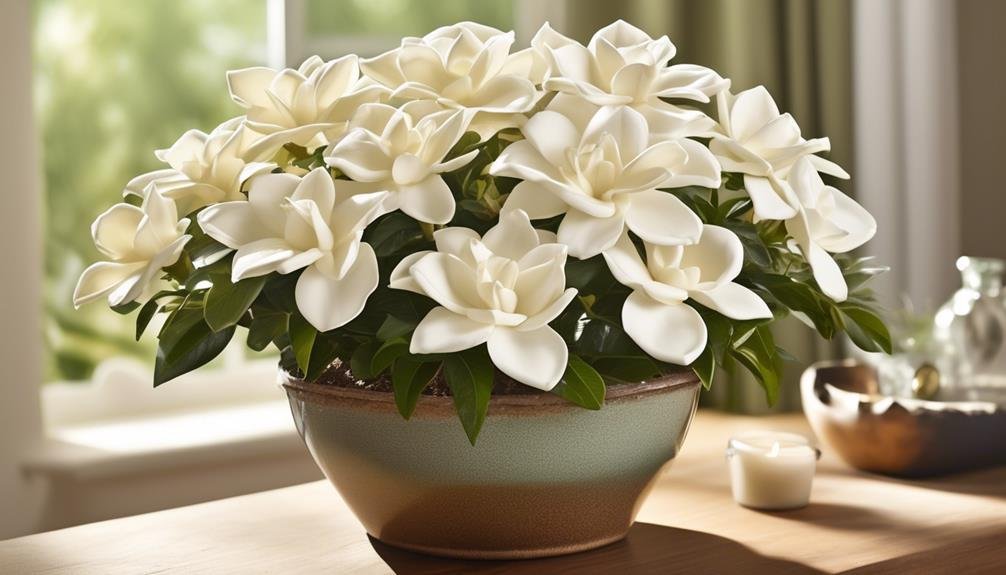
Gardenias thrive with regular watering to keep the soil consistently moist but not waterlogged. Well-draining soil rich in organic matter enhances their growth, while bright, indirect sunlight is ideal for their thriving.
Pruning is essential to shape the plant, remove dead or diseased branches, and encourage new growth.
Common pests like aphids, whiteflies, and mealybugs can be controlled with insecticidal soaps or horticultural oils, while diseases such as powdery mildew and sooty mold should be promptly addressed.
Can Gardenias and Freesias Be Combined in a Floral Arrangement?
Yes, gardenias and freesias can be combined in a floral arrangement to create a beautiful and fragrant bouquet. Both popular freesia florist flowers and gardenias have a lovely scent and complement each other well in a floral display. Their delicate blooms and white petals create a stunning visual impact.
Conclusion
Gardenias are a popular choice for florists because of their elegant creamy-white flowers, sweet fragrance, and symbolic representation of purity.
They're versatile and can be grown in both tropical and colder climates, making them sought-after for arrangements and bouquets.
With proper care, gardenias can thrive and bloom profusely, adding beauty and elegance to any floral display.

